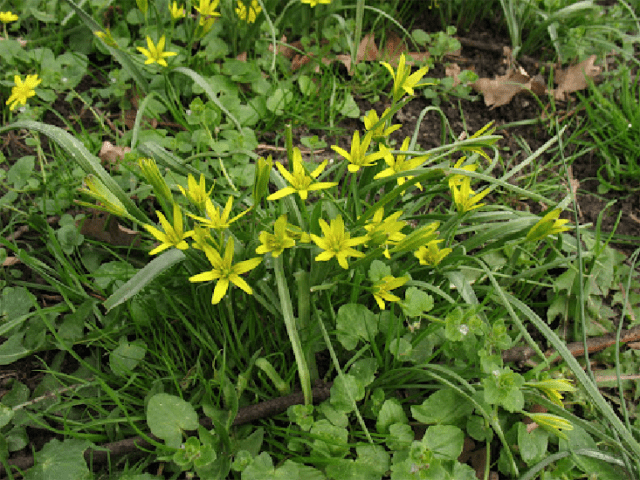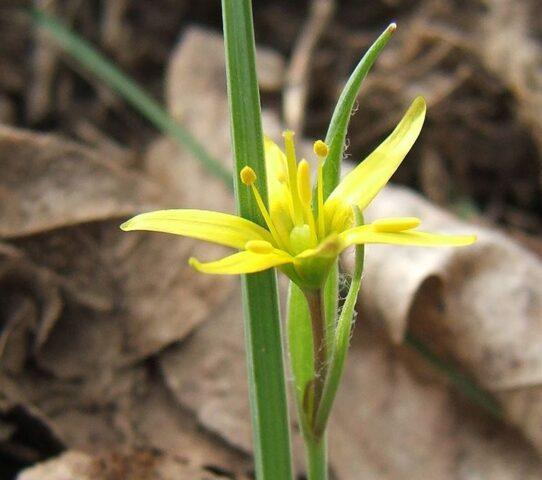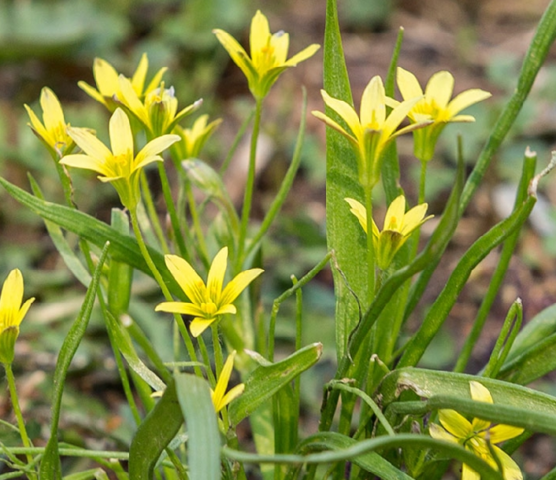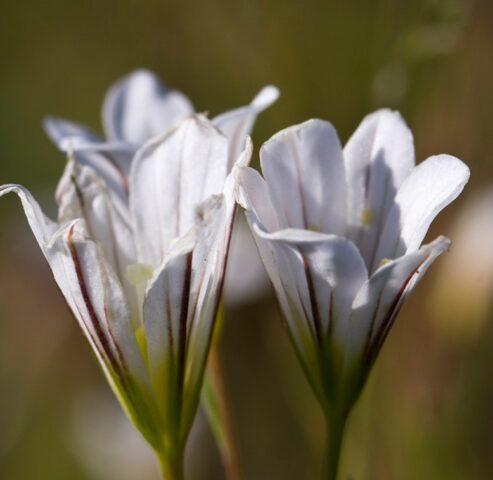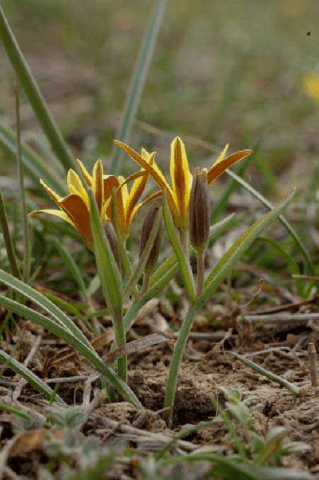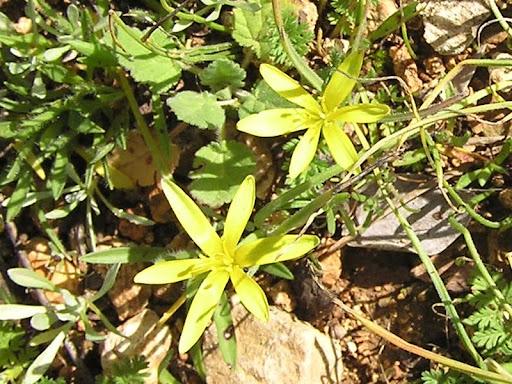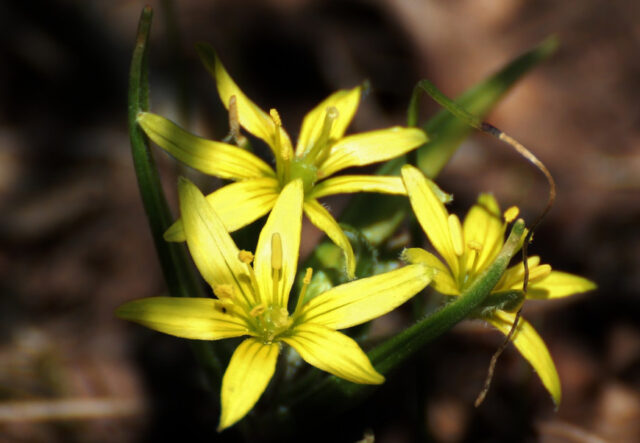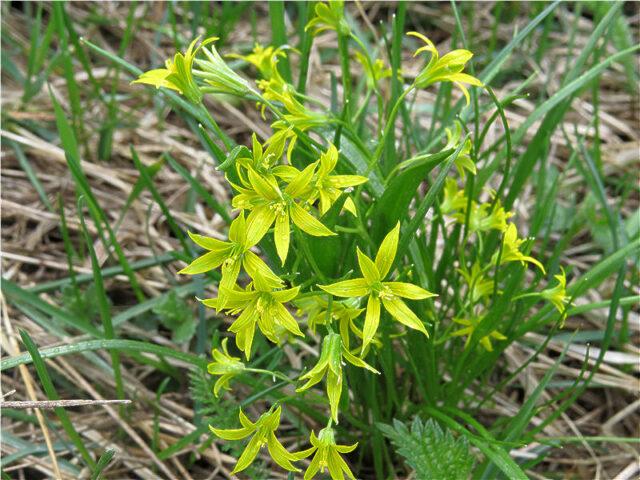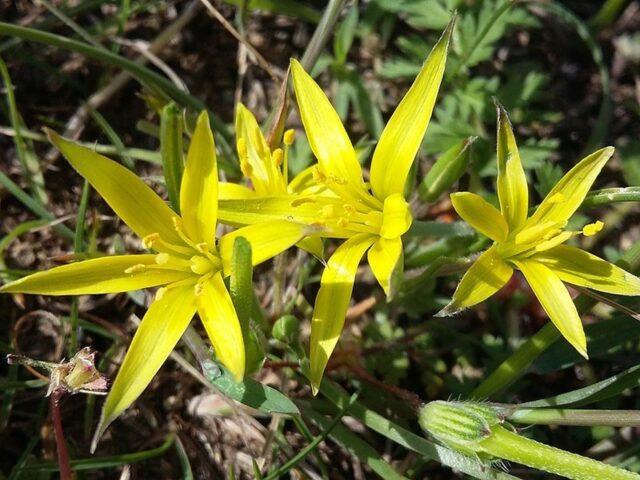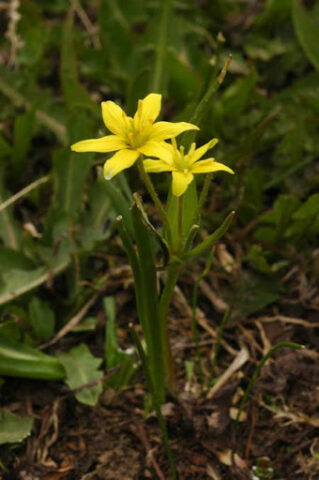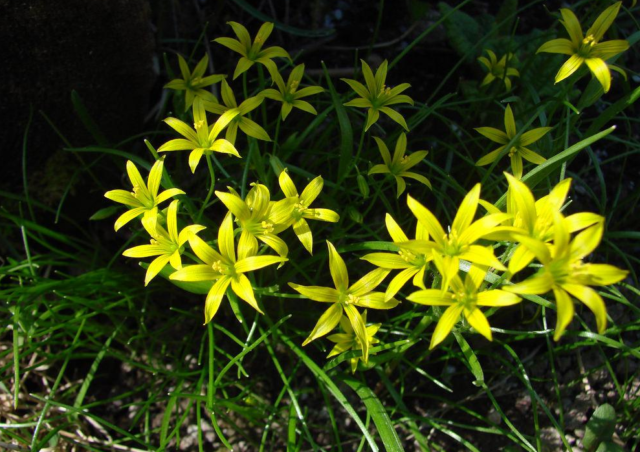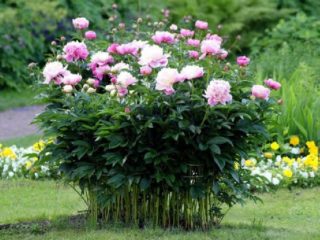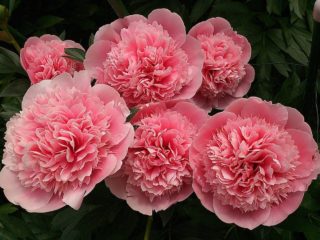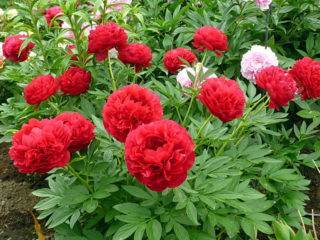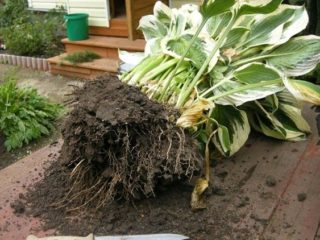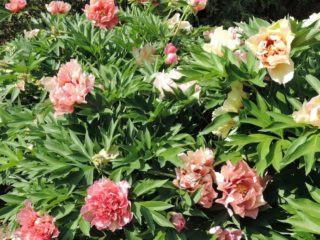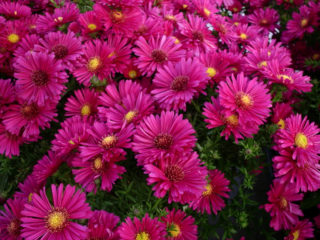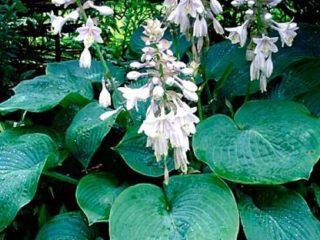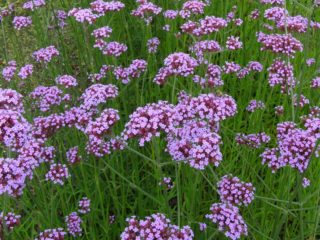Content
Goose onion is an unpretentious perennial belonging to the Liliaceae group. The culture has received several names among the people: yellow snowdrop or bell, yellow flower, bird's onion. The aboveground and underground parts of the plant have medicinal properties.
Description and photo of goose onion
Goose onion is a herbaceous crop.
Aboveground part:
- stem up to 24 cm high;
- 1-2 basal leaves up to 1 cm wide. Their length exceeds the height of the peduncles;
- from 1 to 10 lance-shaped stem leaf blades;
- umbrella-shaped inflorescence of goose onion, consisting of several flowers (sometimes up to 16 units).
The bird's onion flower consists of six petal segments, the length of which reaches 1.5 cm. They are yellow on the inside and green on the outside. There are six stamens inside.
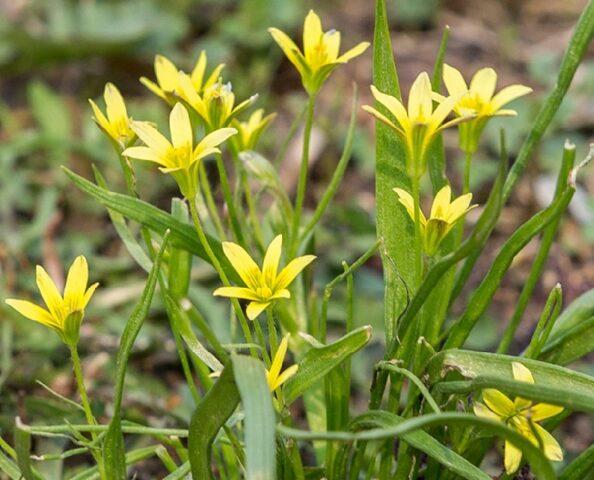
Goose onion flowers bloom from March to May, flowering is short-lived
After the yellowflower fades, the above-ground part of the plant withers and then dies.
Since the outer part is painted green, the inflorescences of the goose onion are lost against the background of the foliage.
The underground part of the yellowflower is an oblong bulb, the outer cover of which is gray-brown in color. It produces smaller children with which you can breed goose onions in your area.
Types of goose onions
The scientific name Gagea goosebow was given in honor of the British explorer Thomas Gage, who was one of the first to describe the culture.
More than 100 varieties of bird onions are found on the European continent alone. Their leaves and flowers practically do not differ from each other, the main difference is in the type, structure and number of bulbs.
Types of bird onions:
- Meadow (Gagea pratensis) has the most striking star-shaped flowers of all the varieties. The height of the perennial varies in the range of 5-20 cm. It grows on calcareous soils and can be found under tall cereal crops.
- Small (Gagea minima) - the perianth petals are sharp, the plant does not exceed 15 cm in height. The wild plant small goose onion reproduces by small bulbs that appear at the base of the mother.
- Yellow (Gagea lutea) - the bush grows up to 25 cm. An insect-pollinated plant that blooms in April, produces seeds in May-June. Grows in moist soils and deciduous forests.
- Greek (Gagea graeca) - the inflorescence consists of five white flowers, the petals of which have purple-brown veins. The plant is not frost-resistant, intended for cultivation in a greenhouse.
- Ruddy (Gagea rubicunda Meinsh) - the name comes from the fact that the perianth petals are purple on the outside. The bush grows up to 15 cm, there are no children on the mother bulb. They are tied to the inflorescence at the end of flowering.
- Fibrous (Gagea fibrosa) – flowering continues into summer. The petals are yellow on the inside and green on the outside.
- Granular (Gagea granulosa) - its stem has no leaves except the basal ones. The inflorescence of goose onion consists of 1-5 flowers. The outer part of the petals is green with brownish stripes. The main bulb is covered with small onions, all of which are under a common shell.
- Pubescent (G. villosa) - in spring, pubescent arrows appear among the narrow leaves, on each of which up to 15 flowers bloom.
- Bulbous (Gagea bulbifera) - differs from its counterparts in the large number of small bulbs that form at the base of the main one. The bushes grow up to 15 cm.
- Sheltered (G. spathacea) is an inconspicuous plant that blooms only in sunny areas.
- Flowering (G. peduncularis) - grows wild in North Africa and the Balkans. Each peduncle produces 1-7 yellow flowers.
The culture is popular due to its medicinal properties. Goose onions are on the verge of extinction. Some species are already protected by the Red Book.
Where does goose onion grow?
The perennial can be found in deciduous forests, on slopes and steep hollows, and deserted steppes. Bird onions grow:
- beyond the Arctic Circle;
- in Siberia;
- in East and Central Asia;
- in Eastern Europe;
- in North Africa.
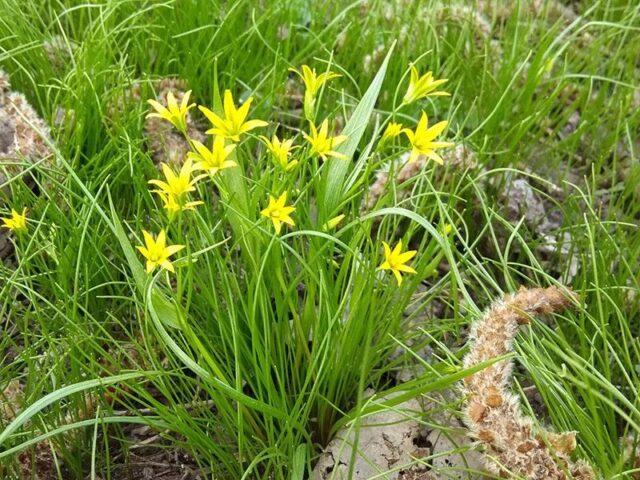
Bird onions are unpretentious and grow even on calcareous and saline soils.
Beneficial features
A salad made from bird onion leaves helps cope with vitamin deficiency. The plant contains the following components:
- vitamin C – ascorbic acid, helps increase immunity against viral and respiratory diseases, fights anemia;
- vitamin E is a powerful antioxidant used in cosmetology to ensure the beauty of skin, nails and hair;
- Vitamin PP – improves the functioning of the liver, cardiovascular system and digestive tract, participates in the body’s recovery processes.
Inulin, which is also found in goose onions, is the main component in the preparation of medicines for heart patients and diabetics. The perennial is known for its antiseptic properties. The plant promotes rapid healing of wounds and ulcers.
Contraindications and side effects
Tinctures, decoctions and ointments based on yellow snowdrop are not suitable for everyone. Some components of poultry onions are allergens. If any reaction to the medicinal plant occurs, you should stop taking it.
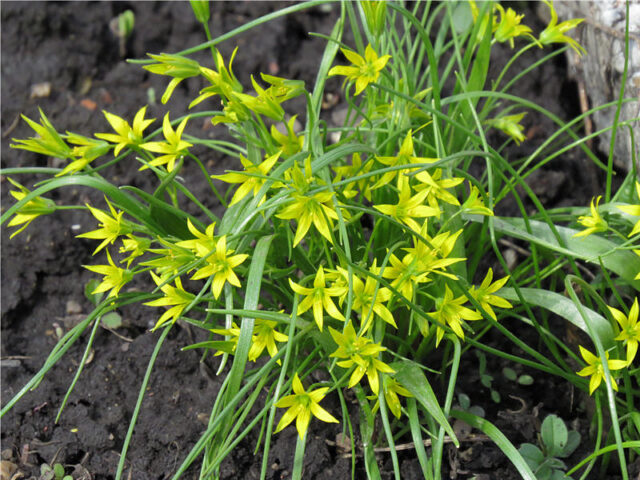
Yellow flower is prohibited for use by pregnant women in any doses, at any time
In some cases, the sap of the plant, if it comes into contact with the skin, causes contact dermatitis. In large doses, bird onions cause irritation of the excretory system and gastrointestinal tract.
Harvesting and storing goose onions
Goose onion bulbs are harvested in the fall. At this point, they are filled with nutrients and juice. They are carefully dug up and cleared of soil. It is not recommended to wash the bulbs, as they will begin to rot. Store the underground part of the yellowflower in boxes in a well-ventilated, dry place. The presence of holes in the container for air circulation is a prerequisite.
Medicinal use
The plant has been used in folk medicine since time immemorial. All parts of the grass are edible. The leaves are used to make salads. Onions are added to dishes to give them a piquant taste.
A decoction that helps with swelling, jaundice, asthma
How to prepare the decoction:
- Grind several root vegetables to make 1 tbsp. spoon of product.
- Place the crushed mass in a saucepan and add 300 ml of water. After boiling, boil for 3-5 minutes.
- Remove from heat and let sit for two hours. Then filter.
The decoction is taken four times a day, 1 tbsp. spoon. It is suitable for consumption within 24 hours. It must be stored at room temperature.
The course of treatment is two weeks, then a break for a month.
Flu treatment
For colds and sore throats, bird onion bulbs are ground into a paste. The product is mixed with honey in a 1:1 ratio.
Skin treatment
Apply a lotion or compress made from two medium-sized onions, mashed into a paste, to the damaged area of skin. You can use the resulting product or squeeze the juice out of it.
The compress or lotion is left on the wound for 24 hours, then a new portion is prepared.
Prevention of epileptic seizures
How to prepare the decoction:
- Place 2-3 finely chopped onions in a saucepan and add 200 ml of milk.
- After boiling, boil for 5 minutes. Then the broth is filtered and allowed to cool.
Drink 1 tbsp. l. three times a day. The course of treatment depends on how often the attacks recur.
Application in cosmetology
Goose onions have also found application in cosmetology. Before use, you must find out if you are allergic to this product.
Bird onion juice will help get rid of age spots. To do this, apply it to problem areas of the skin several times a day (no more than three) using a cotton swab. After the procedure, you should avoid exposure to the sun for several hours.
A therapeutic mask made from crushed onion mixed with honey helps to cope with the problem of porous skin. The mixture is applied to the face for 10 minutes, after which it is washed off with cool water. To remove acne from the face, instead of honey, add egg yolk to the crushed product.
A mask is made from goose onions for better hair growth. Prepare 4 tbsp from the onions. spoons of gruel, mix them with 2 tbsp. spoons of honey. The mask is rubbed into the hair roots and left for 30 minutes. After this, wash your hair thoroughly with shampoo.
Growing Requirements
Yellowflower is an unpretentious, winter-hardy plant. To grow a perennial in a personal plot, goose onions need to be provided with a natural habitat. Therefore, you should choose a place in the sun, in the partial shade of spreading bushes or near artificial ponds.
It is recommended to plant at least ten bulbs, then in the spring a green clearing dotted with yellow flowers will appear on the site. It is necessary to mark the bed so that during summer or autumn work the bulbs hidden underground are not damaged. For the winter, the area where goose onions grow is covered with dry leaves. Indeed, in the natural environment, such protection helps the crop survive the winter.
The perennial is rarely affected by diseases, but due to excess moisture in the soil, rotting of the roots is observed, which leads to the death or weak flowering of the plant.
Conclusion
Goose onion is a medicinal plant that has antibacterial properties and the ability to remove toxins from the body. To grow grass on your property, you need to provide it with conditions similar to their natural habitat.
